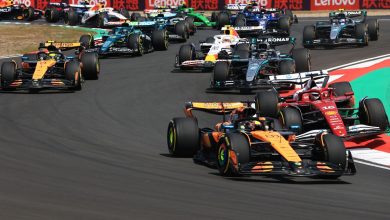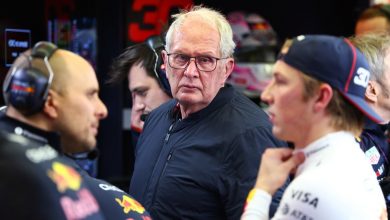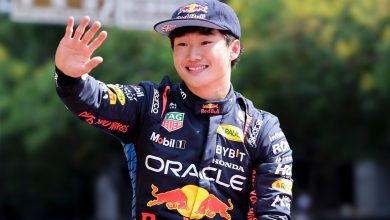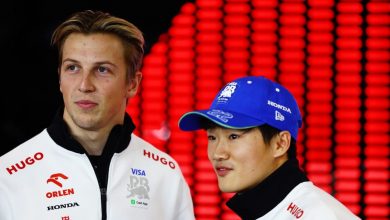How Red Bull's previous mid-season F1 driver swaps worked out
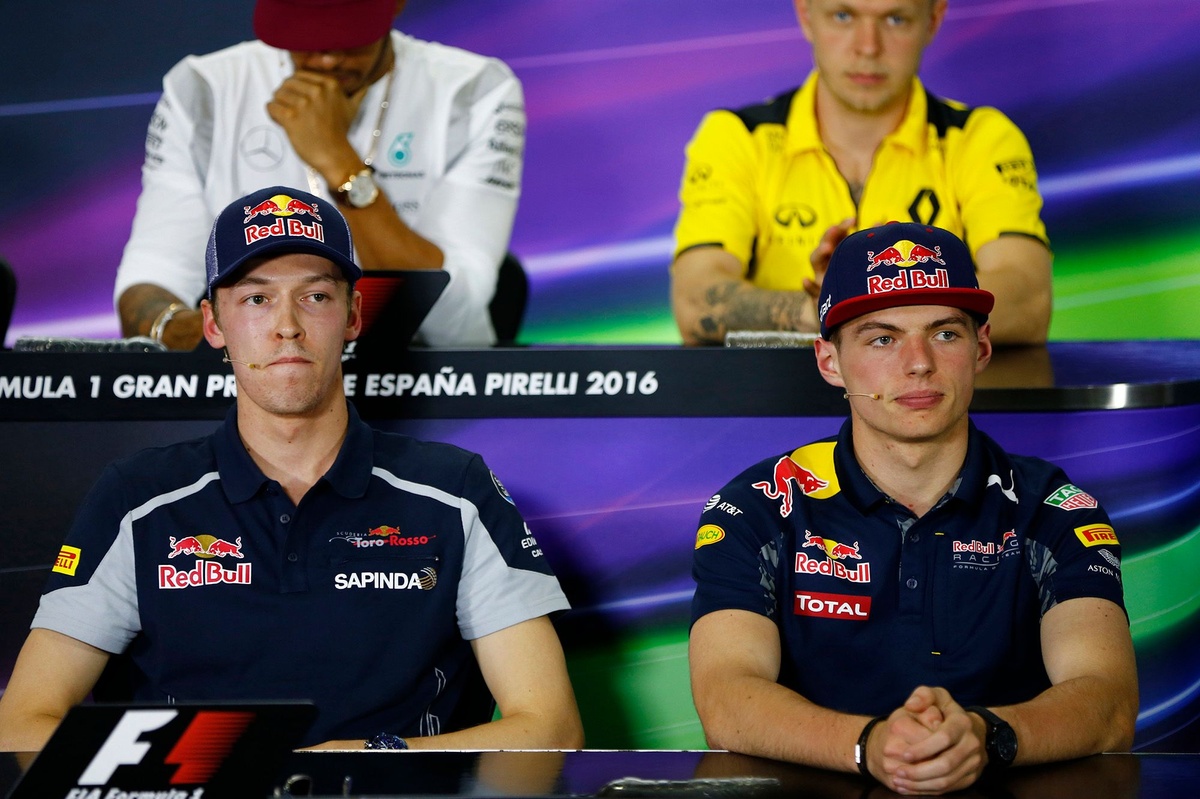
Red Bull’s impending swap between Liam Lawson and Yuki Tsunoda feels particularly brutal coming just two grands prix into the 2025 Formula 1 season – but history shows the company is not shy of shaking up its driver line-ups.
Not counting its agreement with Christian Klien and Vitantonio Liuzzi in its maiden 2005 campaign, Red Bull has rotated its driver carousel for performance reasons on several occasions.
In some instances, the decision to try its luck with the next big talent proved to be a smash hit. On other occasions, the lack of continuity left its two teams back where they started.
2006 – Christian Klien vs Robert Doornbos (Red Bull)

Robert Doornbos, Red Bull Racing with David Coulthard
Photo by: Gareth Bumstead
After leaving three races to Liuzzi, Klien managed to make the Red Bull seat his own for 2006, alongside David Coulthard.
But having struggled to match the 13-time grand prix winner, he was dropped before the end of the season when he publicly refused Red Bull’s offer of an IndyCar drive the following year, which Klien said drew the ire of Helmut Marko.
“I said no to that offer, and probably the mistake I did back then is that I did that publicly on Austrian television,” he told F1’s Beyond the Grid podcast.
“That didn’t go down very well with Helmut and then after the race in Monza, he said: ‘Okay, Christian. We finish it now!'”
In his stead Red Bull promoted third driver Robert Doornbos, who had plenty of experience with the car as at the time teams outside the top four were allowed to enter a third car in Friday practice.
Doornbos did an adequate job over the remaining three rounds, but reverted to being a test driver after that and found more success in IndyCar.
2007 – Scott Speed vs Sebastian Vettel (Toro Rosso)

Sebastian Vettel, Scuderia Toro Rosso
Photo by: Sutton Images
The 2007 season was an unmitigated disaster for Toro Rosso, with Red Bull weighing up whether to replace Scott Speed, Liuzzi, or both at its B-team.
An opportunity came up when its junior driver Sebastian Vettel, on loan at BMW Sauber, made a surprise debut at the United States Grand Prix in lieu of the injured Robert Kubica, after the Pole’s horror crash in Canada.
At Indianapolis Vettel qualified seventh and grabbed the last point in eighth, the youngest points scorer ever at the age of 19. Vettel’s debut performance came at the right time as Speed’s relationship with the team broke down, and after three more retirements for the American Red Bull brought Vettel back into the fold for the Hungarian Grand Prix.
Vettel finished fourth at the Chinese Grand Prix towards the end of the year, and was kept for the following season alongside IndyCar star Sebastien Bourdais. Vettel grabbed a pole-to-flag debut win for the midfield team at the 2008 Italian Grand Prix, earning him promotion to the main outfit for 2009.
And the rest is history, as they say, with Vettel and Red Bull enjoying the brand’s first dominant spell in F1 between 2010 and 2013. Needless to say, the swap was a massive success.
2009 – Sebastien Bourdais vs Jaime Alguersuari (Toro Rosso)

Jaime Alguersuari, Toro Rosso STR04
Photo by: Glenn Dunbar / Motorsport Images
Bourdais carried on but despite his considerable talent and pedigree the Frenchman struggled to match his driving style to the Toro Rosso, and started slipping behind rookie team-mate Sebastien Buemi. Bourdais’ lack of results, paired with junior team graduate Buemi’s solid debut prompted Red Bull to put another academy graduate in the car.
Reigning British F3 champion Jaime Alguersuari thus became the youngest ever F1 driver at 19 years and 125 days – curiously still finishing his ongoing season in the World Series by Renault.
The inexperienced Alguersuari initially didn’t fare much better than Bourdais in 2009, but both he and Buemi did enough to keep their drives throughout 2010 and 2011. However, with Toro Rosso being a breeding ground for Red Bull, neither driver convinced the leadership that they were the right picks for promotion to the main team.
And with a conveyor belt of Red Bull junior talent waiting in the wings, the team decided to replace both for 2012 with Daniel Ricciardo and Jean-Eric Vergne. In the end Alguersuari was a solid enough performer, although it is hard to label this swap much more than a draw for Red Bull.
Famously, Alguersuari retired from racing at 25 to focus on his burgeoning DJ career, one swap which did turn out to be a success.
2016 – Daniil Kvyat vs Max Verstappen (Red Bull)

Christian Horner, Team Principal, Red Bull Racing, Daniel Ricciardo, Red Bull Racing, Max Verstappen, Red Bull Racing, 1st Position, and the Red Bull team celebrate his first and record breaking F1 win
Photo by: Andrew Hone / Motorsport Images
Stability at the A-team with Vettel and Mark Webber meant there were few opportunities for junior drivers to advance past Toro Rosso, with Daniel Ricciardo next in line in 2014.
But once Vettel left for Ferrari and Red Bull’s first dominant era came to an end, there was a brief transitional period that saw several drivers fight for their chance.
Daniil Kvyat initially replaced Vettel after one year at the sister squad, but in Carlos Sainz and teenage sensation Max Verstappen, two young challengers were already nipping at the Russian’s heels.
Despite his youth and lack of experience, Verstappen soon emerged as a generational talent and once Kvyat started having a wobble Red Bull wasted little time swapping the two ahead of the 2016 Spanish Grand Prix.
Verstappen won on his Red Bull debut, becoming by far the youngest ever grand prix winner aged 18 and the team finally found its heir to Vettel – emulating the German with four consecutive drivers’ titles to date. A reasonable success then, that swap.
2017 – Daniil Kvyat vs Pierre Gasly vs Brendon Hartley (Toro Rosso)

Pierre Gasly, Scuderia Toro Rosso and Brendon Hartley, Scuderia Toro Rosso
Photo by: Sutton Images
Kvyat was officially sent back to Toro Rosso to regain his form and confidence, but as Verstappen and Ricciardo formed a strong partnership at the main team the Russian was stuck in limbo at the Faenza squad.
Meanwhile, GP2 champion Pierre Gasly became the next in line for an F1 nod. Gasly replaced Kvyat from Malaysia onwards, with Kvyat returning for one more race when Carlos Sainz left for Renault and Gasly dovetailed F1 with his Super Formula campaign.
The team also brought in Porsche’s Le Mans winner Brendon Hartley for the Austin race alongside Kvyat, and promptly decided to keep the New Zealander as Sainz’s permanent replacement.
While Hartley never managed to establish himself at the team, Gasly went on to become a grand prix winner with AlphaTauri and later a valued team leader at Alpine, so at least that part of the swap was a resounding success. His Red Bull career, not so much.
2019 – Pierre Gasly vs Alex Albon (Red Bull)

Max Verstappen, Red Bull Racing, Alex Albon, Red Bull Racing
Photo by: Andy Hone / Motorsport Images
With Ricciardo replacing Sainz at Renault in 2019, Red Bull needed a new team-mate for Verstappen, who had matured into a formidable opponent.
Red Bull turned to Gasly as the solution, but while Ricciardo was able to run Verstappen close, the Frenchman had a much tougher time, qualifying over half a second per lap off his team-mate on average.
As Gasly’s disappointing performances continued, Red Bull decided to pull the trigger after 12 grands prix, swapping him with Toro Rosso’s Alex Albon ahead of the Belgian Grand Prix.
But, as rookie Albon had even less experience than Gasly, he too struggled to keep pace with Verstappen in the difficult to handle Red Bull that was tailored towards the Dutchman’s unique driving style.
Albon ended up losing his seat at the end of 2020, and while he turned into a key pillar of the Williams team, the swap with Gasly itself was a failure from Red Bull’s point of view.
2023 – Nyck de Vries vs Daniel Ricciardo (AlphaTauri)

Nyck de Vries, Scuderia AlphaTauri
Photo by: Mark Sutton / Motorsport Images
If Gasly lasting only 12 races at Red Bull was a new record across the Red Bull family’s two teams, then that dubious accolade was broken by Nyck de Vries in 2023.
De Vries was the latest outsider brought in at Red Bull’s B-team as its junior squad went through a rough patch, while the Dutchman impressed on a one-off outing in Monza with Williams the previous year.
But de Vries found it harder to get along with the AlphaTauri and a couple of early crashes swiftly piled on the pressure. With Red Bull struggling to see much progress, De Vries was unceremoniously dropped after a 10-round stint.
A Silverstone test convinced Red Bull to give its prodigal son Ricciardo a second lease on life in F1, replacing de Vries from Hungary onwards.
But Ricciardo’s comeback was soon thwarted when he suffered a fractured hand in practice for the Dutch Grand Prix, and while the Australian proved a clear upgrade over de Vries, he couldn’t convince Red Bull that he would be a good fit for a return as Verstappen’s team-mate at the main outfit. He was axed after the 2024 Singapore Grand Prix.
2024 – Daniel Ricciardo vs Liam Lawson (RB)

Liam Lawson,VCARB
Photo by: Erik Junius
Ricciardo was replaced by Red Bull’s latest junior team hotshot Liam Lawson, who had already made a solid impression as the Australian’s replacement while he recovered from his Zandvoort injury.
Lawson was evenly matched with team-mate Yuki Tsunoda, as the pair competed for a chance to dislodge Sergio Perez as he too struggled to keep up with Verstappen.
In the end Red Bull decided to promote Lawson over the more experienced Tsunoda for 2025, citing that Lawson’s lack of experience meant he had a bigger potential upside, and feeling he was better equipped to deal with the demands of the Red Bull pressure cooker.
After only two disappointing weekends, it appears Red Bull is ready to walk back that decision in what would be its most ruthless driver swap of the lot.
In this article
Filip Cleeren
Formula 1
Red Bull Racing
Racing Bulls
Be the first to know and subscribe for real-time news email updates on these topics


